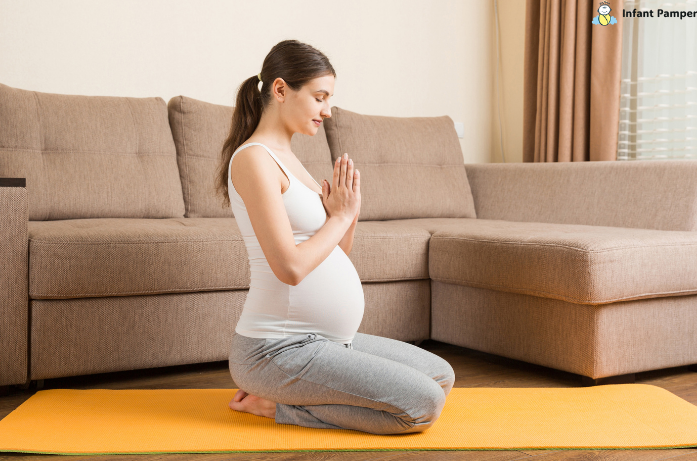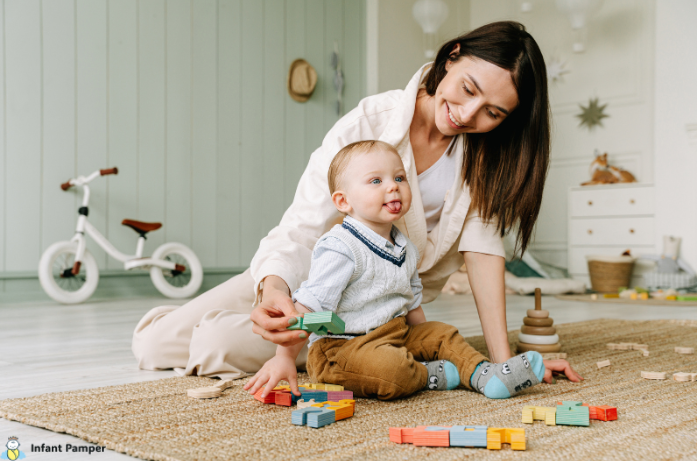By a fellow mom at infant pamper
As new parents, one of the most pressing questions we face is: “Where should my baby sleep?” It might seem like a simple decision, but in reality, sleep arrangements spark endless debates, countless family traditions, and even cultural expectations. While some parents can’t imagine not having their little one snuggled close at night, others feel more comfortable giving their baby a separate space in a crib.
The truth is, there isn’t a single “right” answer. Both co-sleeping and crib sleeping come with benefits, challenges, and safety considerations. What matters most is finding the option that works best for your family, while keeping your baby’s safety the top priority.
Let’s explore both sides so you can make an informed, confident choice.
Understanding the Terms
Before we compare, let’s get clear on what these terms mean:
✅ Co-Sleeping: This refers to parents and infants sleeping in close proximity. Co-sleeping can take different forms:
- Bed-sharing – Parents and baby share the same bed.
- Room-sharing – Baby sleeps in a bassinet, cradle, or crib in the parents’ room but not in the same bed.
✅ Crib Sleeping: The baby sleeps in their own crib or bassinet, either in the parents’ bedroom or in a separate nursery.
Both setups are common and widely practiced, but they create very different nighttime routines.
Benefits of Co-Sleeping
Co-sleeping has been practiced for centuries across cultures. Many parents choose it because it feels natural and nurturing. Here’s why:
- Enhanced Bonding
Sleeping close to your baby can strengthen emotional connection. Your baby feels safe, and parents often feel reassured by hearing their little one’s breathing nearby. - Easier Nighttime Feeding
For breastfeeding moms, co-sleeping (especially room-sharing) can make nighttime feeds easier and less disruptive. Baby is within arm’s reach, so you don’t need to fully wake up or walk across the hall. - Comfort and Soothing
Babies often wake less frequently when they sense a parent nearby. Some families find co-sleeping leads to more restful nights overall.
Risks Associated with Co-Sleeping
As comforting as it can feel, co-sleeping also comes with risks, especially bed-sharing.
- Sudden Infant Death Syndrome (SIDS): Studies link bed-sharing with an increased risk of SIDS, and research published in the National Library of Medicine highlights the significant association between unsafe sleep practices and SIDS.
- Accidental Suffocation: Soft bedding, pillows, or an exhausted parent rolling over can put a baby in danger.
The American Academy of Pediatrics (AAP) advises against bed-sharing but recommends room-sharing (without bed-sharing) for at least the first 6 months, ideally up to 1 year. This setup can cut the risk of SIDS by up to 50%.
Safe Co-Sleeping Practices
If you decide that co-sleeping is right for your family, safety must come first. Consider these guidelines:
- Always place your baby on their back to sleep.
- Use a firm mattress free from pillows, blankets, and stuffed animals.
- Keep the baby away from gaps (between the mattress and wall or headboard).
- Avoid bed-sharing if you or your partner smoke, drink alcohol, or are overly tired.
- Dress your baby in a sleep sack instead of using loose blankets.
- Consider a bedside bassinet or co-sleeper that attaches to your bed for closeness without the risks (Sleep Foundation).
For more detailed guidelines, refer to the Safe Sleep Seven by La Leche League International and Australian Breastfeeding Association which offers practical insights into safe co-sleeping for nursing families.
Advantages of Crib Sleeping
On the other hand, many parents prefer crib sleeping for its safety and structure.
- Lower Risk of SIDS
Babies placed in their own crib on their backs (with no soft bedding) face a significantly reduced risk of sleep-related deaths, a practice strongly encouraged by experts at Stanford Children’s Health. - Encourages Independent Sleep
Babies may learn self-soothing skills earlier when they have their own sleep space. This can make sleep training easier down the road. - Better Rest for Parents
Some parents sleep more soundly when they’re not constantly aware of baby movements or noises. A separate crib gives everyone more breathing space. - Consistency in Sleep Routines
Using a crib from the start helps establish a familiar sleep environment that babies can continue using as they grow into toddlers.

How to Make Crib Sleeping Safe
If you choose crib sleeping, here are essential safety steps:
- Always place your baby on their back to sleep.
- Keep the crib empty, no pillows, toys, bumpers, or blankets.
- Use a tight-fitting crib sheet on a firm mattress.
- Ensure the crib meets current safety standards (check that slats are not too wide, and hardware is secure).
- Keep the crib in your room for at least the first 6 months to reduce SIDS risk, as also recommended by Johns Hopkins Medicine, which provides clear guidelines for safe infant sleep practices.
Making the Right Choice for Your Family
So, which is better: co-sleeping or crib sleeping?
The answer depends on your:
- Parenting style – Do you value closeness at night or prefer more independence?
- Baby’s temperament – Some babies sleep soundly alone; others need the comfort of being near you.
- Feeding method – Breastfeeding parents may find co-sleeping more convenient, while bottle-feeding may work equally well with crib sleeping.
- Parental rest needs – Sleep deprivation is real, and the arrangement that helps you rest safely is important for your well-being.
👉 At the end of the day, safety is non-negotiable. Whether you choose co-sleeping or crib sleeping, follow safe sleep guidelines and check in with your pediatrician if you’re unsure, For further evidence-based guidance, parents can review the resources from the BASIS Baby Sleep Information Source.
FAQs About Baby Sleep
Q1. Is co-sleeping always unsafe?
Not necessarily. Room-sharing without bed-sharing is considered safest. If bed-sharing, follow strict safety guidelines like the Safe Sleep Seven.
Q2. When can a baby safely sleep in their own room?
The AAP recommends room-sharing (but not bed-sharing) for at least 6 months, and ideally up to 12 months.
Q3. What if my baby only sleeps when I hold them?
This is common in the newborn stage. Start with naps in the crib or bassinet to gradually build comfort with independent sleep.
Q4. Can crib sleeping help my baby sleep through the night?
It depends on your baby’s temperament, but having their own space can reduce nighttime waking caused by parental movement or noises.
Q5. Should I talk to my pediatrician about sleep choices?
Yes! Every baby is unique. Your pediatrician can help you navigate safety concerns and reassure you about what’s best for your little one.
Final Thoughts
Experts recommend that babies sleep in the parents’ room, but in their own crib, bassinet, or co-sleeper, for at least the first 6 months. This setup not only lowers the risk of SIDS but also makes nighttime breastfeeding easier and more manageable.
Whether you choose co-sleeping or crib sleeping, remember this: you’re doing your best for your baby. What matters most is safety, love, and consistency.
Every family finds their rhythm in time. Trust your instincts, lean on your support system, and don’t be afraid to adjust as your baby grows.
💌 Every parent’s journey is unique, but support makes it easier. Share this article with other parents and subscribe to Infant Pamper for caring, practical advice on baby sleep, safety, and milestones during your little one’s first year.
Disclaimer: This content is for informational purposes only. Always consult your pediatrician for guidance on your baby’s sleep and safety.




